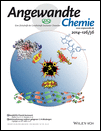Defect Chemistry of Singly and Doubly Doped Ceria: Correlation between Ion Transport and Energetics†
We thank Tien Tran Roehling for the SPS experiments and Seong Kim for technical support with the impedance measurements. This work was supported by the U.S. Department of Energy, Office of Basic Energy Sciences (03ER46053).
Abstract
Earlier studies have shown a strong correlation between the enthalpy of formation, ΔHf,ox, and the ionic conductivity, σi, near room temperature in doped ceria systems, which are promising solid electrolytes for intermediate-temperature solid oxide fuel cells (IT-SOFCs). The present work demonstrates that this correlation holds at the operating temperature of IT-SOFCs, 600–700 °C. Solid solutions of Ce1−xNdxO2−0.5x, Ce1−xSmxO2−0.5x, and Ce1−xSm0.5xNd0.5xO2−0.5x are studied. The ΔHf,ox at 702 °C is determined by considering the excess heat content between 25 and 702 °C combined with the value of ΔHf,ox at 25 °C. Both σi and ΔHf,ox show maxima at x=0.15 and 0.20 for the singly and doubly doped ceria, respectively, suggesting that the number of mobile oxygen vacancies in these solid solutions reaches a maximum near those compositions. An increase in temperature results in a shift of the maximum in both ΔHf,ox and σi towards higher concentrations. This shift results from a gradual increase in dissociation of the defect associates.




